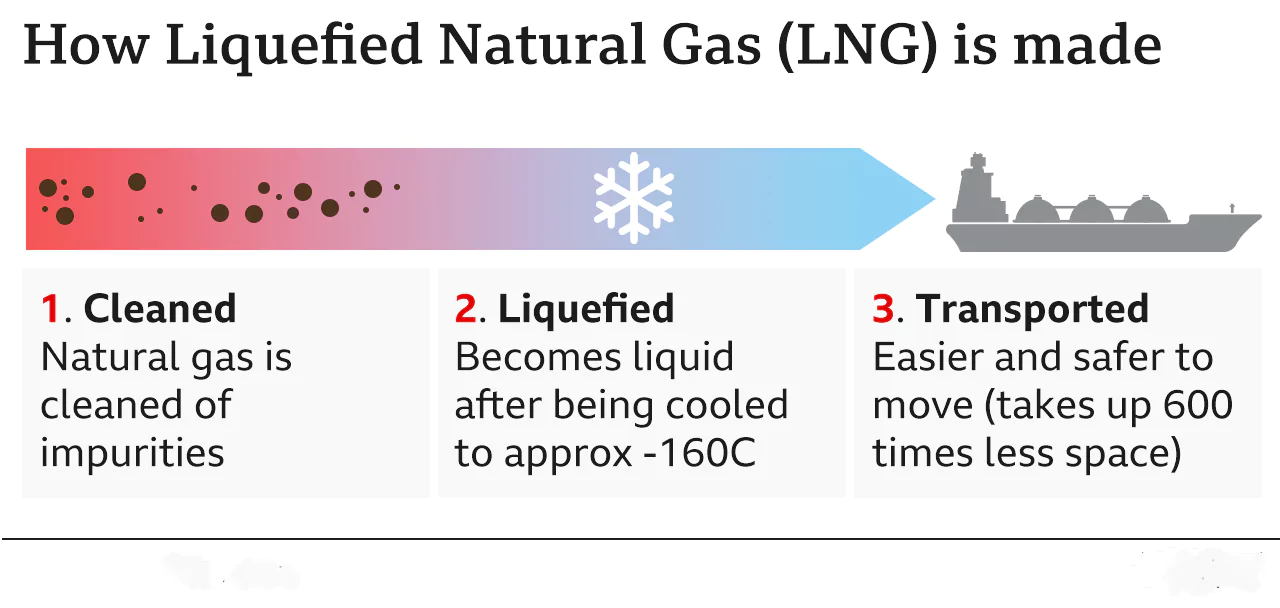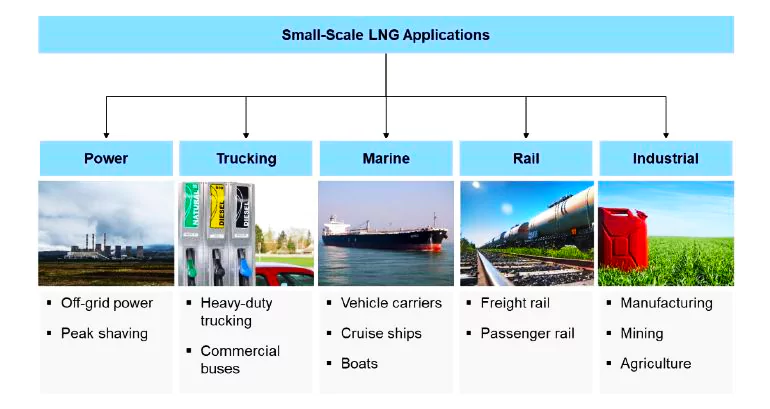![]() 19 Mar 2024
19 Mar 2024
India’s goal to turn India into a gas-based economy has accelerated with the initiation of the first-ever Small Scale LNG unit.
Liquefied Natural Gas (LNG)
Benefits
Drawbacks
Note: Petronet has set up several LNG filling stations, primarily located along highways. |
|---|
 SSLNG provides LNG to businesses and industries either in its liquid form or when it’s super-chilled.
SSLNG provides LNG to businesses and industries either in its liquid form or when it’s super-chilled.  Underdeveloped Retail Infrastructure: A lack of extensive LNG retail networks makes it challenging for consumers to access LNG fuel easily.
Underdeveloped Retail Infrastructure: A lack of extensive LNG retail networks makes it challenging for consumers to access LNG fuel easily.| Feature | SSLNG (Small Scale LNG) | LNG (Liquefied Natural Gas) |
| Scale | Smaller liquefaction plants, lower capacity (less than 500,000 tons per year) | Larger liquefaction plants, much higher capacity (millions of tons per year) |
| Transportation | Cryogenic trucks, small vessels | Large LNG tankers |
| Target Market | Remote areas without pipeline infrastructure, specific fuel requirement industries, automotive fuel | Large-scale industrial users, power generation |
| Regasification | May or may not require regasification depending on end use | Requires regasification for pipeline distribution |
| Infrastructure | Lower investment needs, faster deployment | Higher investment needs, complex infrastructure |
News Source: Indianexpress
| Must Read | |
| NCERT Notes For UPSC | UPSC Daily Current Affairs |
| UPSC Blogs | UPSC Daily Editorials |
| Daily Current Affairs Quiz | Daily Main Answer Writing |
| UPSC Mains Previous Year Papers | UPSC Test Series 2024 |

<div class="new-fform">
</div>